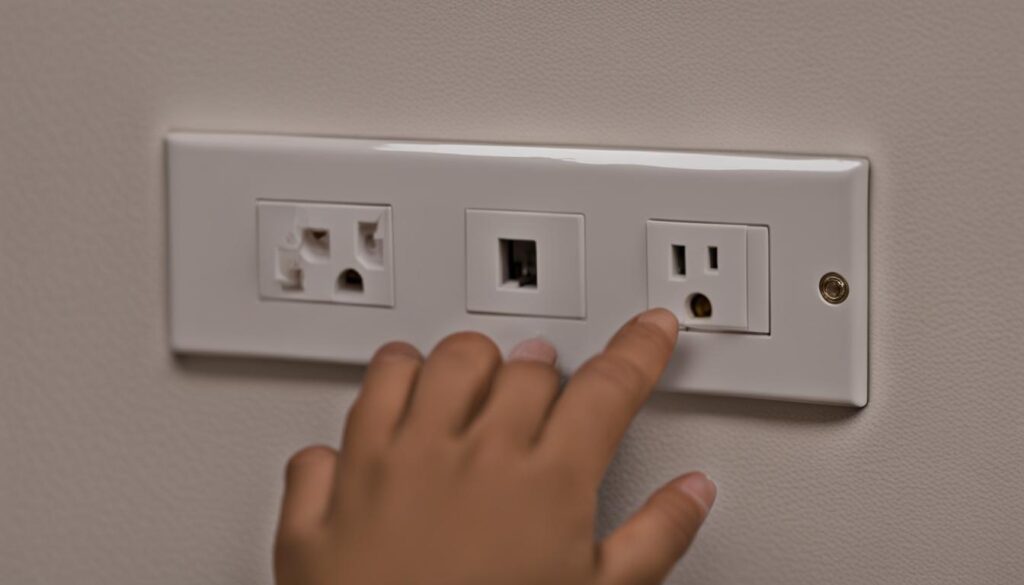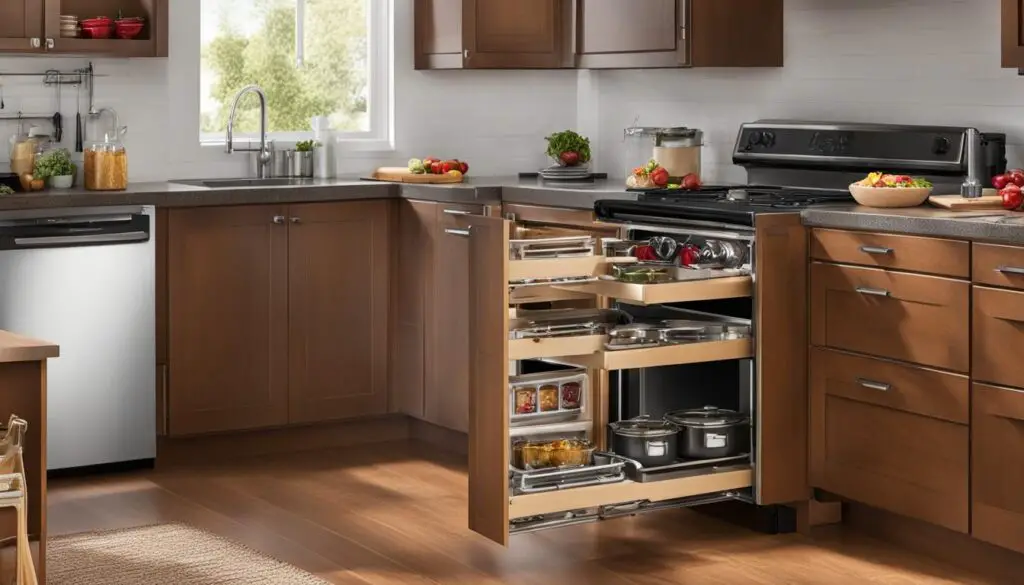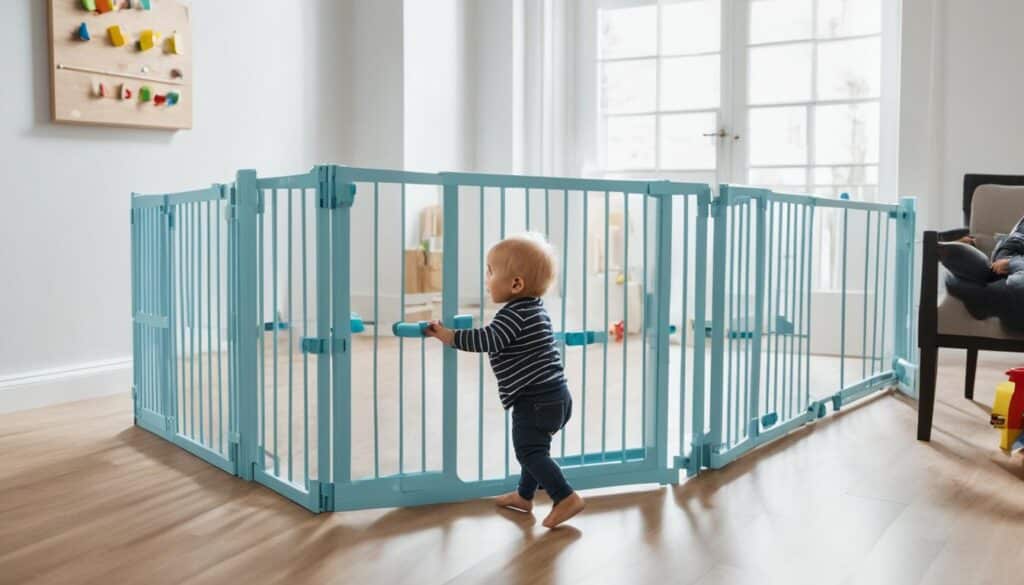Childproofing your home is an essential step in ensuring the safety of your little ones. However, it doesn’t have to break the bank. With these budget-friendly tips, you can create a safe environment for your children without spending a fortune.
When it comes to childproofing, many people worry about the cost of specialized products. The truth is, childproofing doesn’t always require expensive gadgets and gizmos. There are plenty of affordable alternatives available that can effectively childproof your home.
Consider securing furniture by using furniture straps or brackets. This simple step can prevent furniture from tipping over and causing accidents. Additionally, covering electrical outlets with outlet covers can help protect your children from electrical hazards.
Creating a designated play area for your children is another effective way to childproof on a budget. Use safety gates to block off certain areas of your home that may be unsafe for your little ones. By doing so, you can keep them away from potential hazards while still giving them the freedom to explore.
DIY solutions can also be a budget-friendly option. For example, you can use pool noodles to cushion sharp edges of furniture and use hair ties to secure cabinets and drawers. These simple hacks can make your home safer for your children without costing a fortune.
By implementing these budget-friendly tips, you can childproof your home without compromising your budget. Your children’s safety is priceless, and with a little creativity and resourcefulness, you can create a safe environment for them to grow and thrive.
Table of Contents
Key Takeaways:
- Childproofing your home doesn’t have to be expensive.
- Consider affordable alternatives and DIY solutions.
- Secure furniture and cover electrical outlets to minimize hazards.
- Create a designated play area with safety gates.
- Be creative and resourceful to childproof on a budget.
Assessing Potential Hazards
Before childproofing your home, it’s important to identify potential hazards. By assessing these hazards, you can prioritize your childproofing efforts and address the most critical areas first.
Childproofing Checklist
One of the first steps in assessing potential hazards is to use a childproofing checklist. This checklist includes checking for loose cords, securing heavy furniture, and ensuring window safety. By systematically going through the checklist, you can identify areas in your home that require immediate attention to create a safer environment for your children.
To get you started, here are some items that should be on your childproofing checklist:
- Secure heavy furniture to the wall to prevent tipping.
- Install window guards or window stops to prevent falls.
- Ensure blind cords are out of reach or use cord shorteners to eliminate choking hazards.
- Check for any small objects that could pose a choking hazard and remove them from reach.
- Look for sharp edges and corners on furniture and apply corner guards or edge protectors.
Common Household Hazards
In addition to the checklist, it’s important to be aware of common household hazards that can pose a risk to young children. These hazards include choking hazards, toxic substances, and falling risks.
“Parents should be cautious of small objects that could accidentally be swallowed by children, as well as cleaning products or medications that can be toxic if ingested,” warns Dr. Smith, pediatrician at ABC Children’s Hospital. “Ensure that all hazardous substances are securely stored out of reach.”
Home Safety Assessment
To conduct a thorough assessment of your home’s safety, consider walking through each room and identifying any potential dangers. Look for unlocked cabinets, reachable electrical outlets, and unsecured appliances that could cause harm to your children.
Dr. Johnson, a child safety expert, advises, “Take a critical look at your home from a child’s perspective. Get down on their level, crawl around, and see what hazards you can spot. This will help you to better understand the potential dangers and take appropriate measures to address them.”
By assessing potential hazards through the use of a childproofing checklist and conducting a home safety assessment, you can proactively create a safe environment for your children. Implementing these measures will not only minimize the risk of accidents but also provide you with peace of mind as your little ones explore their surroundings.
Securing Furniture and Appliances
When it comes to childproofing your home, securing furniture and appliances is of utmost importance. Unsecured heavy objects can pose a serious risk to children, potentially leading to accidents and injuries. By taking the necessary precautions, you can minimize these risks and create a safer environment for your little ones.
First and foremost, it is essential to anchor heavy furniture properly. Using furniture straps or brackets is an effective way to secure items such as bookshelves, dressers, and TVs. By attaching these firmly to the wall, you can prevent them from tipping over and potentially causing harm.
Appliances, too, need to be secured to ensure their safety. TVs, microwave ovens, and washing machines are examples of appliances that should be properly anchored. Tipping accidents involving these items can have serious consequences. Installing brackets or using safety straps designed for appliances can help prevent such accidents from occurring.
Child-safe locks and latches play a crucial role in preventing accidents caused by unsecured cabinets and drawers. Children are naturally curious and can easily pull on cabinets, causing them to topple over. By using child-proof locks and latches, you can keep these storage spaces securely closed and prevent accidents related to heavy objects falling.
Benefits of Securing Furniture and Appliances
By securing your furniture and appliances, you are taking proactive steps to ensure the safety of your children. This not only minimizes the risk of accidents but also provides you with peace of mind, allowing your little ones to explore their surroundings while staying protected.
Remember, childproofing is an ongoing process, and regularly reassessing and reinforcing your safety measures is crucial. By securing furniture and appliances, you are building a solid foundation for a safe and secure home environment.
Electrical and Fire Safety
Ensuring electrical and fire safety is of utmost importance when childproofing your home. By implementing the following measures, you can create a safer environment for your children:
Outlet Covers
One essential step in electrical safety is to use outlet covers. These simple yet effective devices prevent children from inserting objects into electrical outlets, reducing the risk of electrical shocks and accidents.
Cord Management
Proper cord management is crucial to prevent tripping hazards and accidental strangulation. Keep cords organized and out of reach of children, utilizing cord concealers or cord clips to secure them against walls or furniture. This not only enhances safety but also maintains a clutter-free space.
Smoke Detectors
Installing smoke detectors on every floor of your home is essential for early detection of fires. Regularly test the smoke detectors to ensure they are functioning correctly and replace batteries as needed. Smoke detectors provide a crucial early warning system that can save lives and protect your home.
Remember, electrical and fire safety measures are vital for creating a safe environment for your children. By using outlet covers, managing cords properly, and installing smoke detectors, you can significantly reduce the risk of accidents and promote a secure home.

Kitchen Safety
The kitchen is a high-risk area for children, so special attention should be given to childproofing this space. To ensure their safety, I recommend implementing the following kitchen safety measures:
1. Stove Knob Covers
Prevent children from accidentally turning on the burners by using stove knob covers. These covers securely fit over stove knobs, making it difficult for little hands to maneuver them. By using stove knob covers, you can minimize the risk of burns and kitchen accidents.
2. Cabinet Locks
Install childproof locks on cabinets and drawers that contain potentially dangerous items such as cleaning products, sharp utensils, and breakable dishes. Cabinet locks provide an additional barrier, keeping curious children away from hazardous materials and reducing the risk of injuries.
3. Appliance Cord Management
Children are naturally curious, and dangling appliance cords can pose a strangulation hazard. It’s important to manage appliance cords in a way that keeps them out of reach of children. Use cord shorteners or secure cords to the wall to prevent accidents and ensure a safer kitchen environment.
“Without proper childproofing measures, the kitchen can be a dangerous place for children. By using stove knob covers, cabinet locks, and managing appliance cords, you can create a safer space for your little ones.”

By implementing these kitchen safety measures, you can minimize the risk of burns, cuts, and ingestion of harmful substances. Proper childproofing in the kitchen is essential for creating a safe environment for your children.
Bathroom Safety
The bathroom can be a hazardous area for young children, so it is crucial to implement childproofing measures to ensure their safety. By following these bathroom safety tips, you can minimize the risk of accidents and create a secure environment for your little ones.
1. Toilet Locks
One of the potential dangers in the bathroom is access to the toilet bowl. To prevent children from reaching into the toilet or falling in, it is recommended to install toilet locks. These simple devices restrict access and help keep your child safe.
2. Non-Slip Mats
Slips and falls in the bathtub or shower can lead to serious injuries. Placing non-slip mats in these areas provides traction and reduces the risk of accidents. By ensuring a secure footing, you can enhance the safety of your child while they bathe.
3. Medicine Cabinet Locks
Medications and other potentially harmful substances stored in the medicine cabinet pose a significant risk to children. Using medicine cabinet locks keeps these items out of reach, preventing accidental ingestion. Make sure to secure your medicine cabinet properly to protect your child from harm.
Implementing these bathroom safety measures, such as toilet locks, non-slip mats, and medicine cabinet locks, plays a vital role in reducing the risk of drowning, injuries, and accidental ingestion in the bathroom.
Next, we will explore the final section of this article, which will provide a conclusion and recap of the essential childproofing tips discussed.
Conclusion
Childproofing your home is essential for creating a safe environment for your little ones. And the best part is, it doesn’t have to be expensive. By following these budget-friendly tips, you can childproof your home without breaking the bank.
Start by assessing potential hazards in your home, such as loose cords, unsecured furniture, and reachable electrical outlets. Once you’ve identified the areas that need attention, focus on securing furniture and appliances to prevent tipping accidents. Use furniture straps or brackets to anchor heavy items, and don’t forget to secure appliances like TVs and washing machines.
Electrical and fire safety is also crucial. Install outlet covers to prevent children from accessing electrical outlets, and manage cords to prevent tripping hazards. Make sure you have smoke detectors installed on every floor of your home and test them regularly.
Pay special attention to the kitchen and bathroom, as these areas pose additional risks. Install stove knob covers to prevent accidental burns, and use childproof locks on cabinets and drawers that contain potentially dangerous items. In the bathroom, consider using toilet locks and non-slip mats to minimize the risk of accidents.
Remember, childproofing is an ongoing process. As your child grows and develops new abilities, new hazards may arise. Regularly reassess your childproofing measures and make necessary updates to keep your home safe. By prioritizing the safety of your little ones, you can have peace of mind knowing that you’ve taken the necessary steps to protect them.
FAQ
Why is childproofing your home important?
Childproofing your home is essential to ensure the safety of your little ones and prevent accidents or injuries.
Are childproofing products expensive?
Childproofing products can be expensive, but there are many affordable alternatives available that can help you create a safe environment for your children without breaking the bank.
What are some budget-friendly childproofing tips?
Some budget-friendly childproofing tips include securing furniture and appliances, using outlet covers, installing smoke detectors, and implementing safety measures in the kitchen and bathroom.
How can I assess potential hazards in my home?
You can assess potential hazards in your home by using a childproofing checklist, identifying common household hazards, and conducting a home safety assessment to identify any potential dangers.
How can I secure furniture and appliances?
You can secure furniture and appliances by using furniture straps or brackets to anchor heavy items, securing appliances to prevent tipping accidents, and using child-safe locks and latches on cabinets and drawers.
What electrical and fire safety measures should I implement?
Electrical and fire safety measures you should implement include using outlet covers to prevent children from accessing electrical outlets, proper cord management to prevent tripping hazards, and installing smoke detectors on every floor of your home.
How can I childproof the kitchen?
To childproof the kitchen, you can use stove knob covers to prevent children from accidentally turning on burners, install childproof locks on cabinets and drawers, and manage appliance cords to keep them out of reach of children.
What safety measures should I take in the bathroom?
In the bathroom, you should use toilet locks to prevent children from accessing the toilet bowl, place non-slip mats in the bathtub and shower to prevent slips and falls, and install medicine cabinet locks to keep medications and harmful substances out of reach.
How can I childproof my home on a budget?
You can childproof your home on a budget by following budget-friendly tips such as securing furniture and appliances, focusing on electrical and fire safety, childproofing the kitchen and bathroom, and regularly reassessing and updating your childproofing measures.


